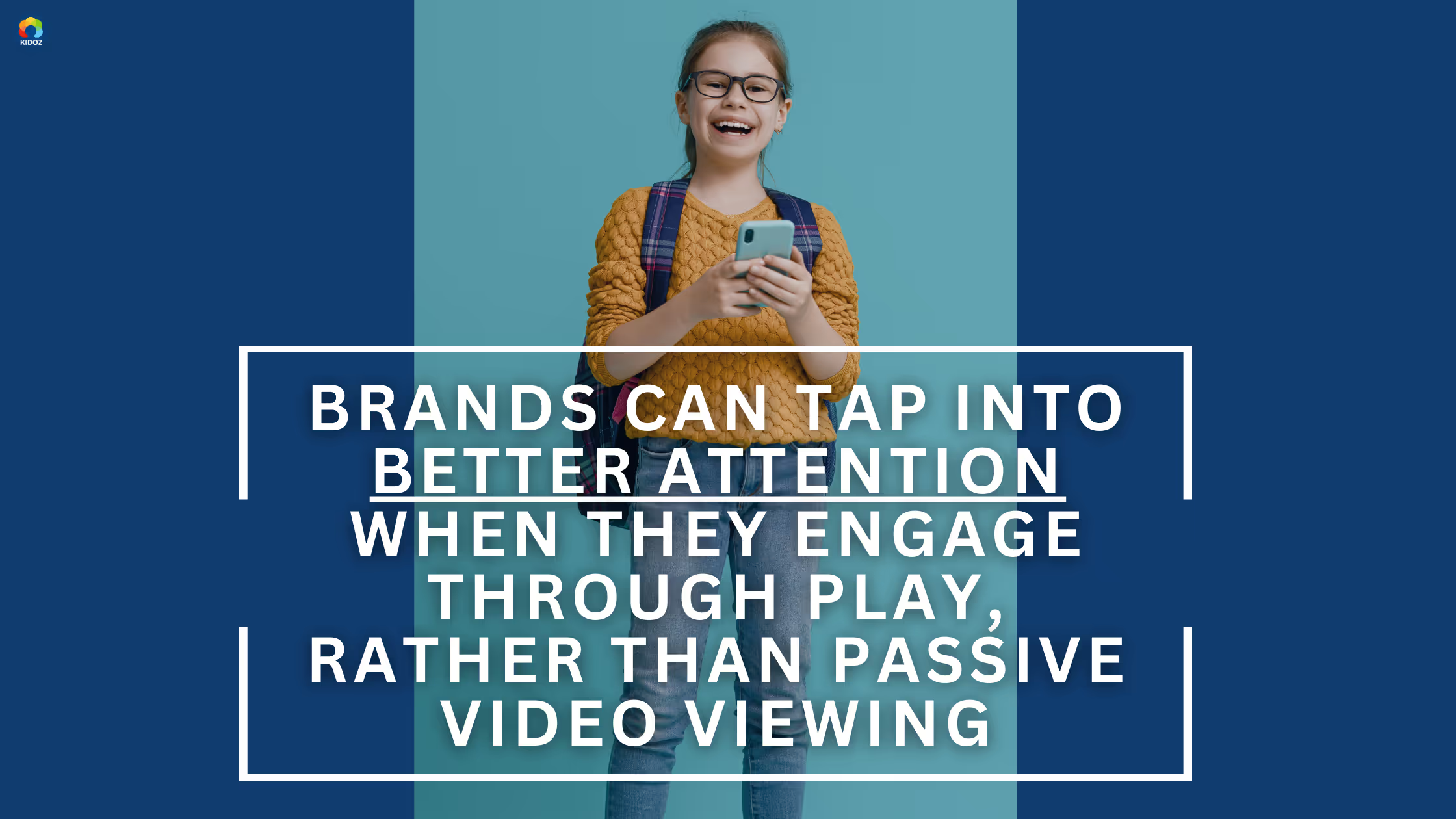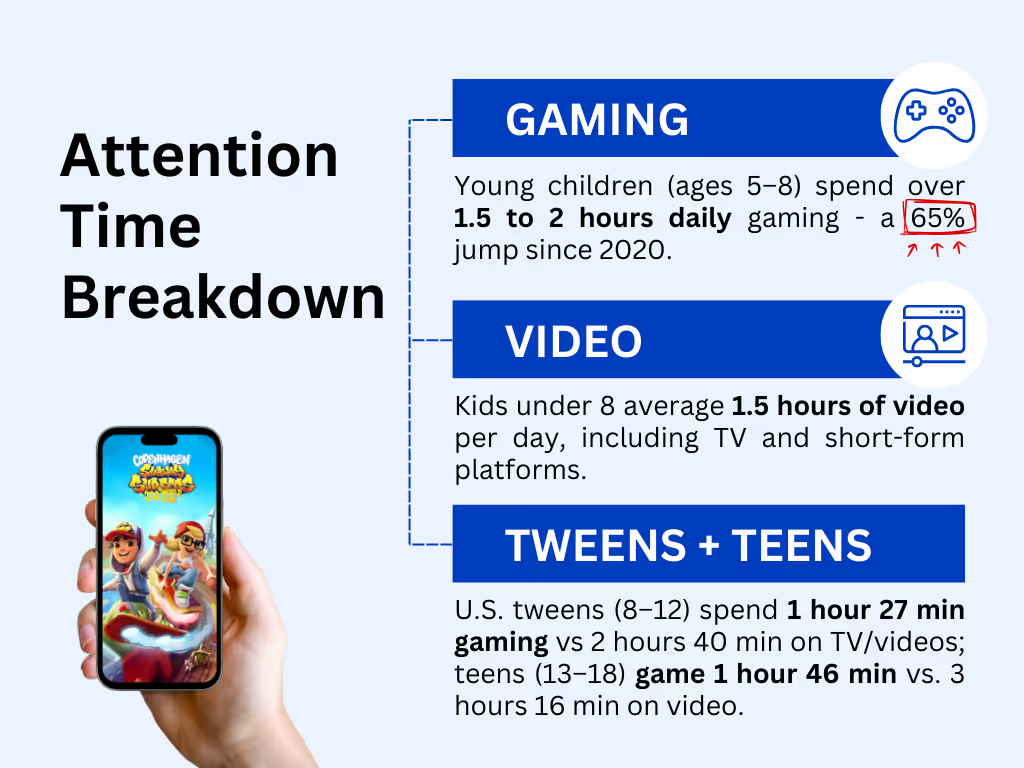
Today, kids’ attention spans are gold, and gaming increasingly wins the prize. Unlike passive video viewing, gaming demands interaction, decision-making, and often collaboration, which naturally sustains focus for longer stretches of time. As a result, the attention kids give to gaming is more intentional, more immersive, and more emotionally connected to the experience. For brands, this isn’t just screen time, it’s quality attention time, where messages can be woven into the action in ways that feel natural, rewarding, and memorable.

These numbers highlight a crucial insight for brands: while video still commands more total daily time, gaming delivers a remarkably high share of focused, interactive attention, especially given its growth trajectory. The 65% jump in mobile gaming among young children since 2020 signals a clear behavioral shift, with gaming cementing itself as a core entertainment habit alongside video. For tweens and teens, the gap between gaming and video time is narrower than many assume, making games a powerful channel to engage audiences who are actively participating rather than passively watching.
What It Means:
* Higher engagement in games comes from interactivity, agency, and social connectivity - factors video often lacks.
* Brands can tap into longer screen time and better attention when they engage through ads embedded in play, rather than passive video viewing.
Why This Matters to Brands & Advertisers:
Understanding where kids actually spend their time, and what keeps their attention, is critical. For brands, mobile gaming is more than just fun... it’s a direct route to deeper engagement, better brand recall, and a more effective digital strategy.


